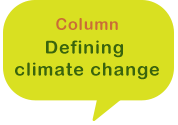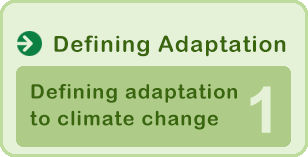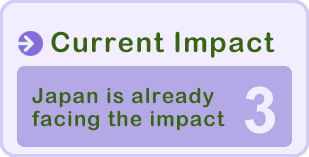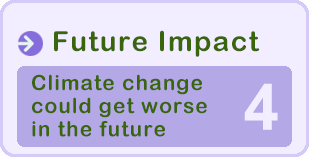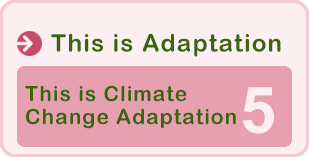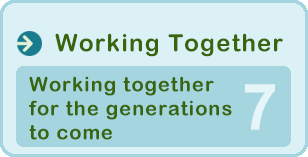1Adapting to climate change
Adapting to climate change means learning to live safely as the environment around us changes and whenever possible, using these changes to our advantage.
Let me give you some examples. Imagine that you have to go out on a sizzling summer day. The sun is beaming heat. The temperature is over 35°C. If you go out as if this is a normal balmy day, you might end up with heatstroke.
To avoid heatstroke, you could wear a hat, use a parasol, or drink a lot of water. These four options are adapting to the risk of heatstroke.

The situation wouldn’t be so different when you’re at home. If the temperature is 35°C outside and you’re inside, the temperature will start to rise. You have options here.
You could turn on your air conditioning, drink something cold, put on shorts, or open the window to let air in. These are four ways of adapting to the heat.
Back to adaptation to climate change: Compared to 100 years ago, today’s temperatures are hotter in Japan.
We know that climate change effects our food, our health, our air and everything around us. These outcomes from climate change effects are increasing. By the middle of this century, they’re likely to be worse.
The question is what we need to do.
We need to adapt to the climate change, just like you would adapt to a sizzling hot day by wearing a hat or drinking more water.
This website is for you to learn how climate change is happening in Japan and globally, what impact it has, and what it will look like in the future. We also want you to know how to adapt to climate change.
Please take a look at the pages below to learn about climate change and adaptation.
Defining climate change
Climate means what the weather is like, on average, over a long period of time. This includes things like temperature and rain. Let’s look at climates around Japan as an example. The Japan Sea side of the country gets a lot of rain and snow in the winter. The other side, the Pacific side, has lots of sunny days, and we have a hot season in summer and a cold season in winter.
But the climate doesn’t stay the same. It’s actually changing all the time. There are two things that cause the climate to change: ①natural causes, and ②human activities.
① Natural causes include solar activity, volcanic eruptions, changes in the atmosphere and oceans, and other natural phenomena that have nothing to do with human activities.
② Human activities that influence climate changes are greenhouse gas emission, which are produced when we burn fossil fuels for heat, electricity and transportation.
When we combine the impact of our activities with natural causes, climate change is becoming stronger and happening faster. We use the phrase climate change to mean those changes that we humans cause.

